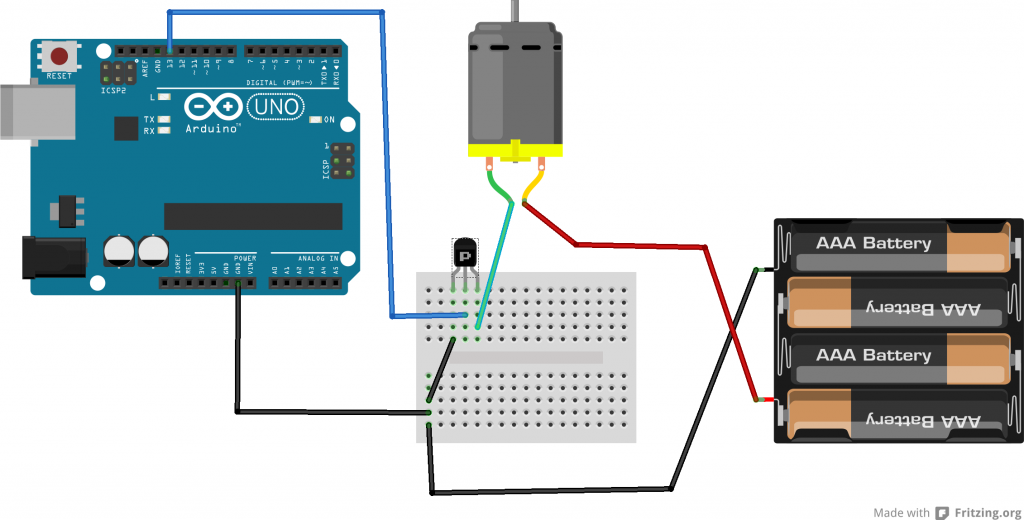A common mistake with Arduino beginners is to use the board to deliver power .
Altough it is ok for small devices such as sensors, leds, etc, it can only deliver 40ma (per pins) which wont work for more needy devices such as motors.
There comes the transistor which lets a small current control a much larger one and your Arduino can therefore manage devices which are power supplied from a separate source.
There are 2 sort of transistors : the PNP and the NPN.
The PNP will turn on with a LOW signal whereas the NPN will turn with a HIGH signal.
A transistor has 3 pins (looking at the labelled / flat side), from left to right : (C) the collector, (B) the base, (E) the emitter.
The collector is connected to the negative pin of the device. (the positive pin of the device being connected to the positive power supply)
The base is connected to the digital pin of the arduino.
The emitter is connected to the ground.
See below the wiring
The the Arduino sketch is rather simple
int Pin = 9;
void setup(){
pinMode(Pin, OUTPUT);
}
void loop(){
digitalWrite(Pin, HIGH);
delay(2000);
digitalWrite(Pin, LOW);
delay(2000);
}

